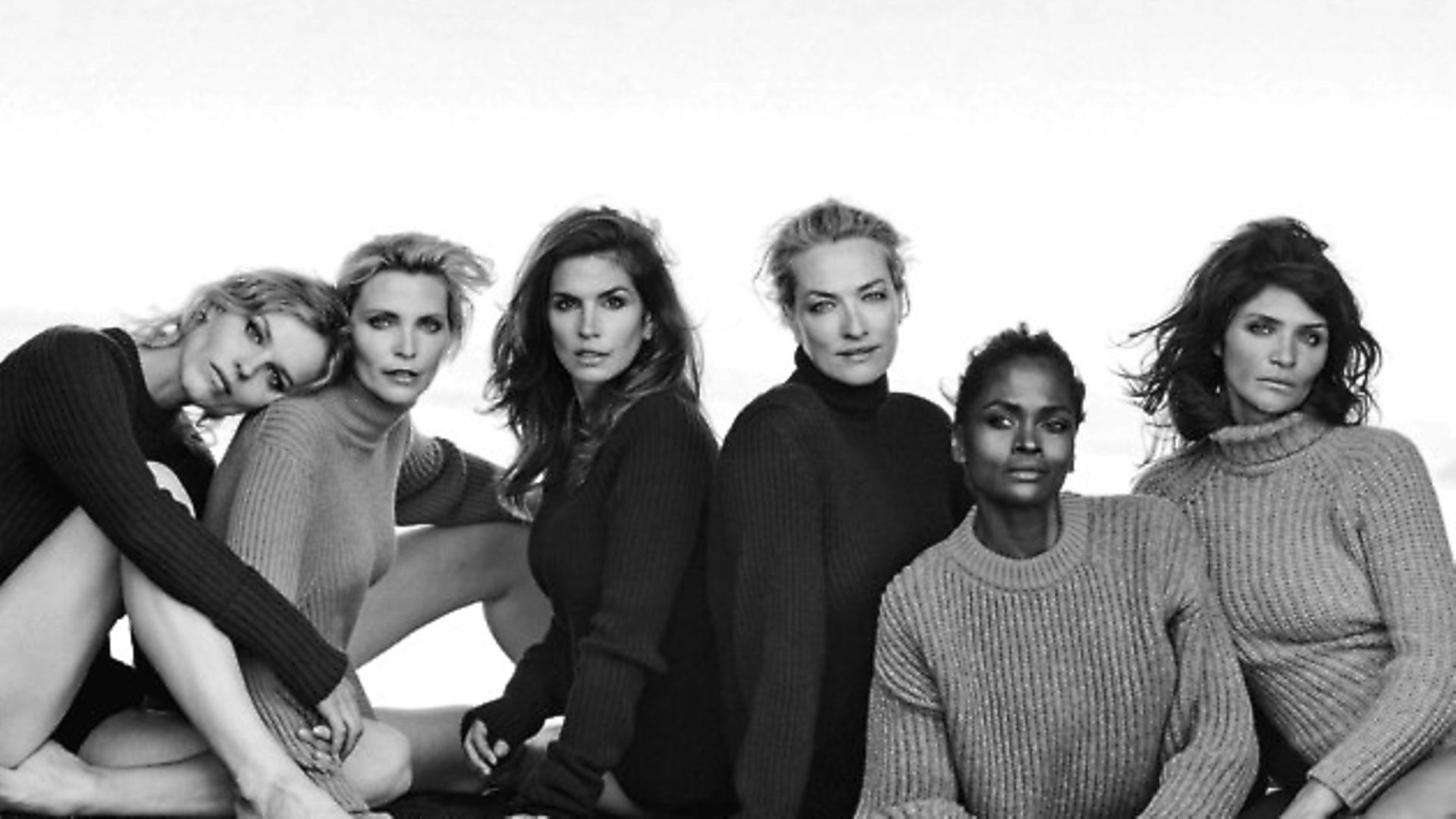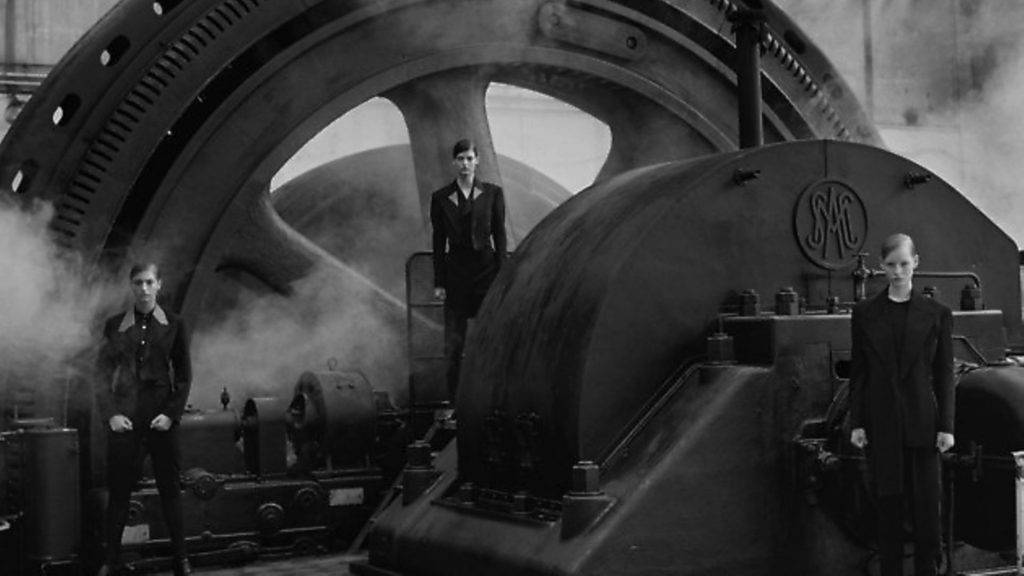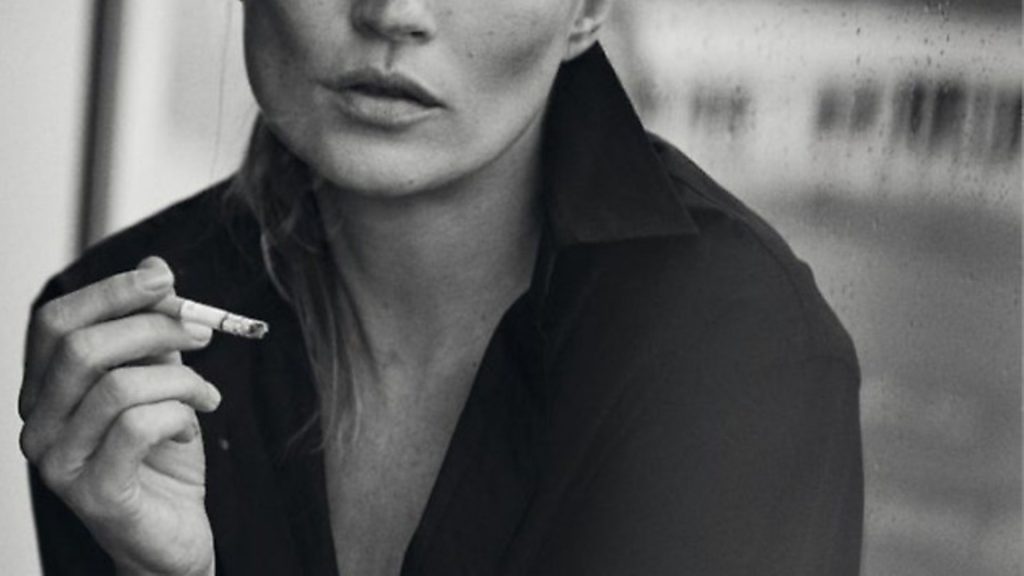
Lindbergh’s black-and-white narrative changed the course of fashion photography

S/S 1988 © Peter Lindbergh (Courtesy of Peter Lindbergh, Paris / Gagosian Gallery) – Credit: Archant
Peter Lindbergh is an anti-fashion fashion photographer. His elegant imagery and portraits are rarely in colour, framing the subject with unretouched soulfulness and realism.
Having photographed models and personalities for some of the most iconic international magazines for decades, Lindbergh’s work is now being celebrated in a blockbuster retrospective exhibition at the Kunsthal in Rotterdam. Spanning several rooms in the Rem Koolhaas building, the exhibition is spectacular in its breadth of awe-inspiring imagery. Lindbergh’s pictures often appear in magazines or books, but here they take centre stage in grand proportions on white walls, allowing the viewer to gawp at the dark beauty of Pina Bausch or the androgynous romance of pleasingly weathered Kate Moss.
What unites each image, whether a portrait of an actor or a narrative-led series of fashion pictures, is that they prioritise soul and personality, and the visuals influenced by the language of film and by playing with the type of strong, self-willed woman, from the femme fatale to the heroine, but also the dancer and actress and pop star.
By 1998, ten years after moving from Düsseldorf to Paris to pursue his photographic career, Lindbergh garnered international acclaim and launched the careers of a new generation of models because of one particular image he had recently taken of them.

Gagosian Gallery) – Credit: Archant
In January 1988, Lindbergh had gone to beach in Santa Monica with Linda Evangelista, Karen Alexander, Christy Turlington, Estelle Lefébure, Tatjana Patitz and Rachel Williams. Styled in oversized white shirts, the result was a shock to the formal composition of fashion photography and its strictly regimented codes.
The photograph showed the models, barely known back then, unpretentious and giggling together on the beach, all dressed in white shirts and minimal make up, and with no retouching in post-production. It was first turned down by American Vogue as the magazine thought it did not reflect its vision at the time.
Lindbergh explained to Alexander Liberman, Vogue’s editorial director, and Grace Mirabella, editor-in-chief of the magazine between 1971 and 1988, that he preferred to show strong and independent women, because he could not relate to the images of overly styled women the magazine featured. Neither of them could believe that he would refuse what was considered a prestigious offer to work for Vogue.
Liberman asked Lindbergh to show them this kind of woman and Mirabella turned down the photograph, leaving it in a drawer in her office. Luckily for Lindberg, six months later Mirabella was fired and Anna Wintour was ushered in as the new editor-in-chief, promptly digging out the image and commissioning Lindbergh to photograph her first cover, which starred fresh-faced Israeli model Michaela Bercu dressed in a Christian Lacroix haute couture jacket and Guess stonewashed jeans – a dramatic departure from the close-up headshots of fully caked models such as Brooke Shields.

© Peter Lindbergh (Courtesy of Peter Lindbergh, Paris / Gagosian Gallery) – Credit: Archant
‘When Peter sent us the image he had left space above and below for the Vogue title and he thought the jeans were to be cropped,’ recalled Wintour. ‘In fact it only reinforced the idea to take couture’s haughty grandeur and playfully throw it headlong into real life and see what happened… what none of us expected was to run that picture on the cover, least of all the magazine’s printers, who called up and asked with some consternation whether there had been a mistake.
Michaela wasn’t looking at you, and worse, she had her eyes almost closed. Her hair was blowing across her face and it looked easy, casual, a moment that had been snapped on the street, which it had been, and which was the whole point.’
Under the patronage of a now-supportive Condé Nast, Lindbergh’s career flourised and he made lasting relationships with models – many of whom he still works with today. There was to be a yet more iconic Vogue cover to come: the 1990 group shot of the women that would become known as the ‘supermodels’: Christy Turlington, Linda Evangelista, Naomi Campbell, Cindy Crawford and Tatjana Patitz.
The five women gaze out from the black and wide image at the viewer with utter magnetism, each one unique in their look and womanly in their strong bones, athletic figures and simple styling – each one in a jersey blouse worn with jeans. ‘I was rather uninspired with the way women were photographed in the 80s,’ recalled Lindbergh.

� Peter Lindbergh (Courtesy of Peter Lindbergh, Paris / Gagosian Gallery) – Credit: Archant
‘I was trying to photograph them in a different way, but nobody seemed to care back then… I wanted to move away from the rather formal, perfectly styled woman who was very artificial. I was more concerned about a more outspoken, adventurous woman in control of her life and not too concerned about her social status emancipated by masculine protection.’
George Michael saw the cover and immediately booked the five women for his music video for Freedom! 90, directed by David Fincher, in which they lip-synched to the song.
Soon, Gianni Versace further iterated their star power when, for his AW’91 ready-to-wear show, he ushered them out as the finale in matching dresses singing along to Michael’s hit single.
‘The British Vogue cover was the image that defined the ’90s new identity: models who do not appear as mere objects, facing the viewer with confidence and pride that many could relate to,’ said Thierry-Maxime Loriot, the French curator of the exhibition.
Lindbergh’s realism-tinged photography would soon have a known-on effect amongst younger photographers that were more interested in grunge than high fashion. In the ’90s Corinne Day made her name with images articulating youth and innocence, many of which featured a young Kate Moss in pared-back surroundings and today Lindbergh’s work continues to influence new photographers like Harley Weir and Tyrone Lebon.
Today, his work is just as relevant, timeless in its simplicity and presence. Looking at it hanging on the walls of the Kunsthal, they evoke the emotion and depth of the subject with rooted reality and artistry. Lines are visible on faces and imperfections are celebrated.
In a world of Snapchat filters, hyper-photoshopped imagery and social media perfection, Lindbergh’s work stands as a testament to beauty that lies beneath the surface.
Peter Lindbergh: A Different Vision on Fashion Photography is on at the Kunsthal Rotterdam until February 12, 2017. The book is published by Taschen
Warning: Illegal string offset 'link_id' in /mnt/storage/stage/www/wp-includes/bookmark.php on line 357
Notice: Trying to get property 'link_id' of non-object in /mnt/storage/stage/www/wp-includes/bookmark.php on line 37






